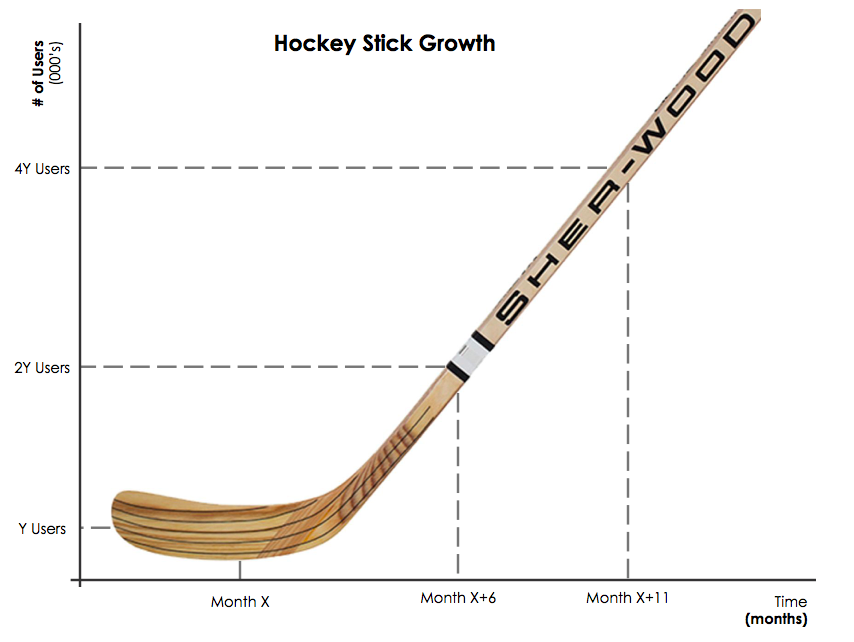But building it for you is a great place to start
Editor’s note: this essay tackles a problem my cofounders and I faced a few years ago during my time at Dribble. This conundrum is still prevalent for many founders today. Additionally, I am currently a digital marketer at GoCardless but remain an investor at Dribble.
When building your product, it’s natural for you to build it for yourself. I mean you are building this product to help with a problem you personally want to stamp out of existence, right? At least that’s the case for many.
So building the product for you as a customer is a great place to start.
The needs of a few can skew the needs of many
The early users you acquire buy into your solution with a significant time-investment. Early product releases are never perfect, so the users who stick-it-out become your “power users”, providing valuable feedback (about themselves) to help make a better product (for themselves).
The early employees you bring on will have hopefully found the same value from your solution, as well as, buying into the long term vision of the product, so soon start building features to help maximise the reward for your “power users” (and themselves).
At this stage, you are building a product to solve the problem for you, your early “power users” and your early employees. That’s ideal right?
Yes, but only for a fleeting moment. It’s now time to think bigger.
Market Problem
Your target market
I personally experienced this conundrum when cofounding Dribble at university. Since we had the solution to a niche problem, the logical use-case was to target those just like us, other students. So all growth, acquisition and product development efforts were tailored to them/us.
If we stuck building the product for ourselves and the university lookalikes, we would have failed, since the market problem was not as prevalent for the segment. The real market problem was with a demographic, polar opposite to students….employed people with disposable income (also football fans and regular punters). This was the potential customer base we were missing and not building the product for.
So, we changed our product and messaging to accommodate. Changes included:
Copy. From millennial slang to more succinct and professional. Like SPORTBible getting a job at Sky Sports
User journey. To be less around the social side of playing with your friends, to playing to win and making money on the platform
Acquisition. To target those that require a higher CAC since they are more affluential
Branding. To suit the professional sports fan rather than the young student (notice how young = ⚡)
Dribble logo 2015 - Dribble logo 2016 (which has now changed again in 2018)
By coming together and working on all (and more) of these changes, we were able to start an ongoing iteration process that lasts today. Thankfully we learnt the lesson laid out by Casey Winters, the growth lead who helped scale Pinterest:
“Your customer focus should always be on new or potential users, not early users”
As Casey mentions, once early value is established, start building the product for the larger market problem. The problem which is incredibly diverse with an insane amount of use-cases. This new product must iterate, grow, evolve to be a living breathing solution to the larger market. Then, and only then, will you have a viable product for the long term.
Dynamic, not static product optimisation is the key.
Shifting away from your early "power users"
Your early "power users" are the dark side
When tackling a problem, you start with trying to monopolise a small niche within the greater market. If you’re a fantasy football app (using our app as an example) you can’t just jump into the whole sports market as you’d immediately be drowned by insane customer acquisition costs.
You start by focusing on a much smaller but highly engaged (daily fantasy) market.
Listening and learning from your early power users will help you reach great heights within your small niche. But remember this is just a small piece within the greater pie. So if you get stuck only listening and catering to their needs, your growth will be stunted since the ceiling of potential is mapped to that small piece.
Shifting your product and customer acquisition efforts to the wider market at the right time and shifting away from the power users, will hold you in good stead to address the much larger opportunity. This should only be done once you’ve reached product market fit.
How do you know when you’ve reached PMF?
In short, it’s when you have a product worth using by at least a sub-segment of the market. Questions to ask yourself:
Is my retention curve flat after 1, 3 or 6 months (length of time depends on your business model)?
If I turned off all acquisition and retargeting efforts (including push notifications and email) would there still be healthy usage?
Do note, this essay does not mean you must forget your early adopters. Building a community around the ever growing use-cases and user profiles is the best way to keep engaged your early and current power users.
Conclusion
So, even though your early power users are valuable at the beginning, be aware that they will bias your experiments, skew your data, make it harder to find new users and ask for features to help only their experience. (Note that an increase in power user engagement will be negligible since they’re already using it so frequently.)
The real value is to build the product for your potential customers, focus growth and development on the new users and be the solution to that larger market problem.
-
The aim for this essay is to hopefully dispel any early founders from making a similar mistake my cofounders and I faced. If you found value in this essay and want others to see this, please share.
I really appreciate it!
I'm re-invigorating my LinkedIn profile so feel free to connect. I'm accepting all connections :)
You can find more of my musings about growth, strategy and user acquisition on my site Bright Fund, and if you’re feeling quirky you can even subscribe. Alternatively you can find my Medium publication, Bright Fund.















































